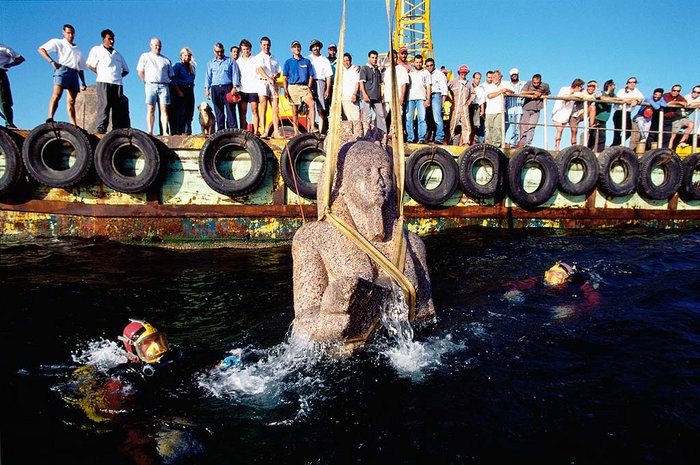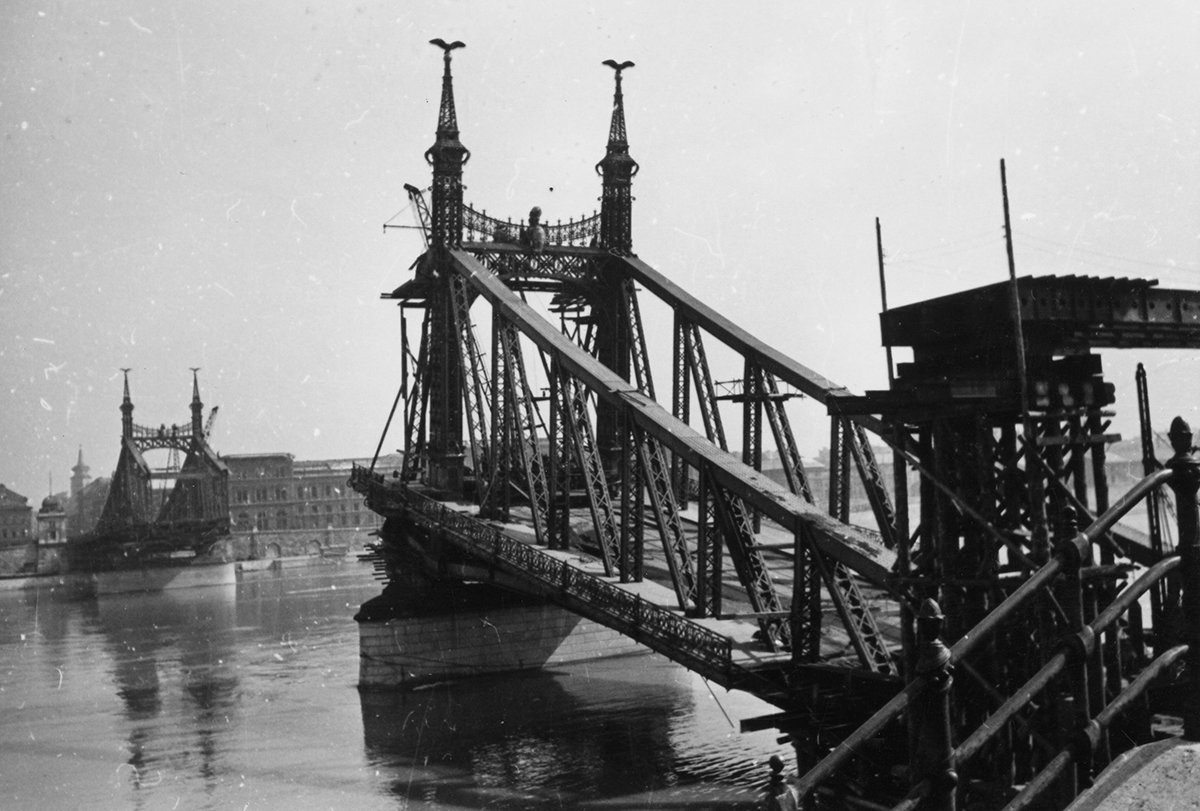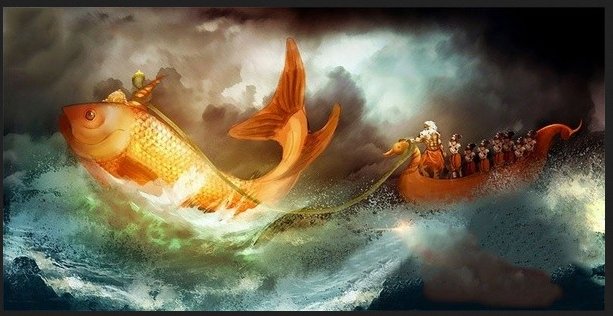Once a thriving hub of the ancient world, the city was devastated by a series of environmental disasters, & now lies 6.5km off the coast in the blue waters of the Egyptian sea.
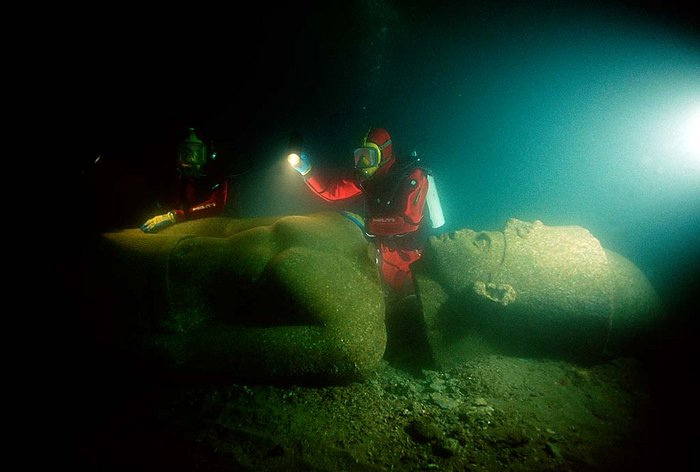
He claimed to have seen massive ruined structures below the waves: buildings, squares & streets, a whole city lost beneath the ocean.

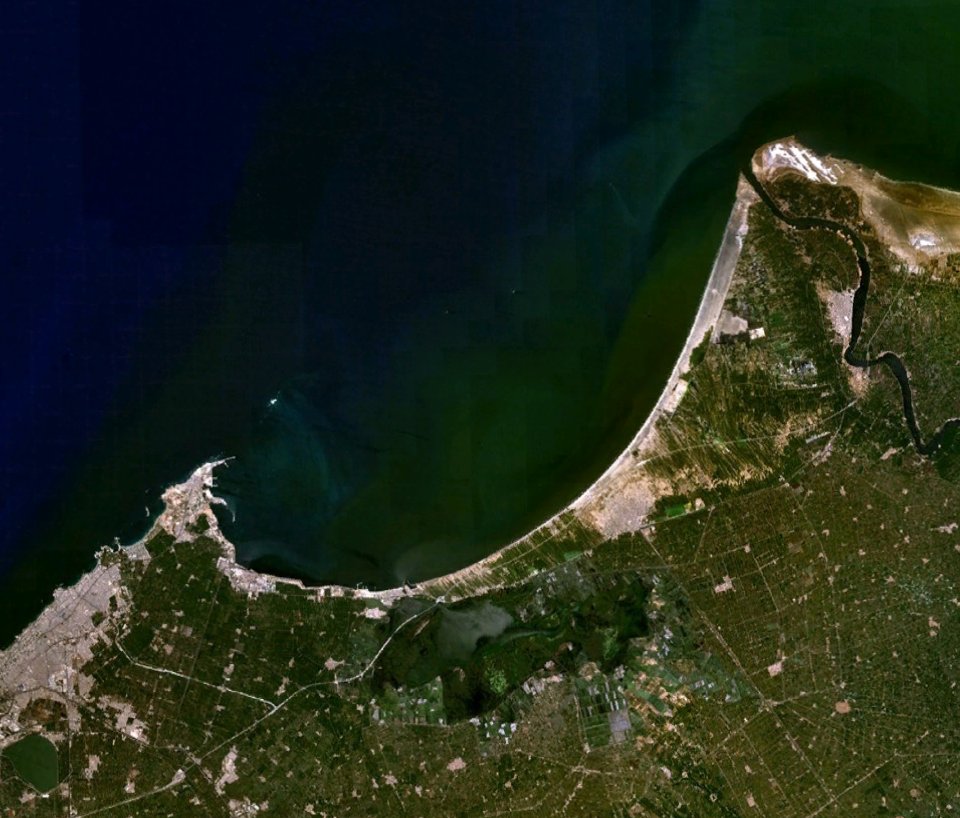
They found something, though: an enormous head of stone, larger than life, thought to be part of a statue depicting Alexander the Great.
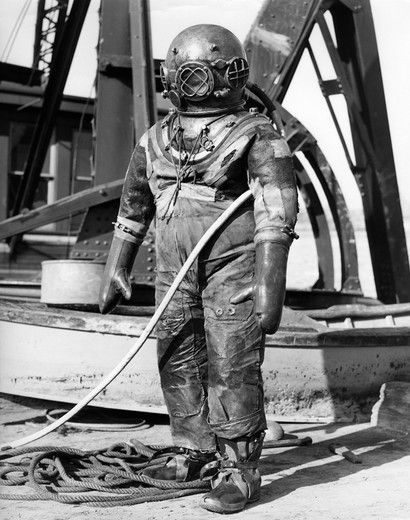
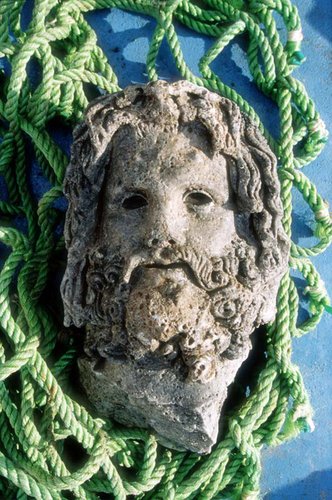
They were searching for the warships of Napoleon’s fleet that were sunk by Admiral Nelson during the 1798 Battle of the Nile.
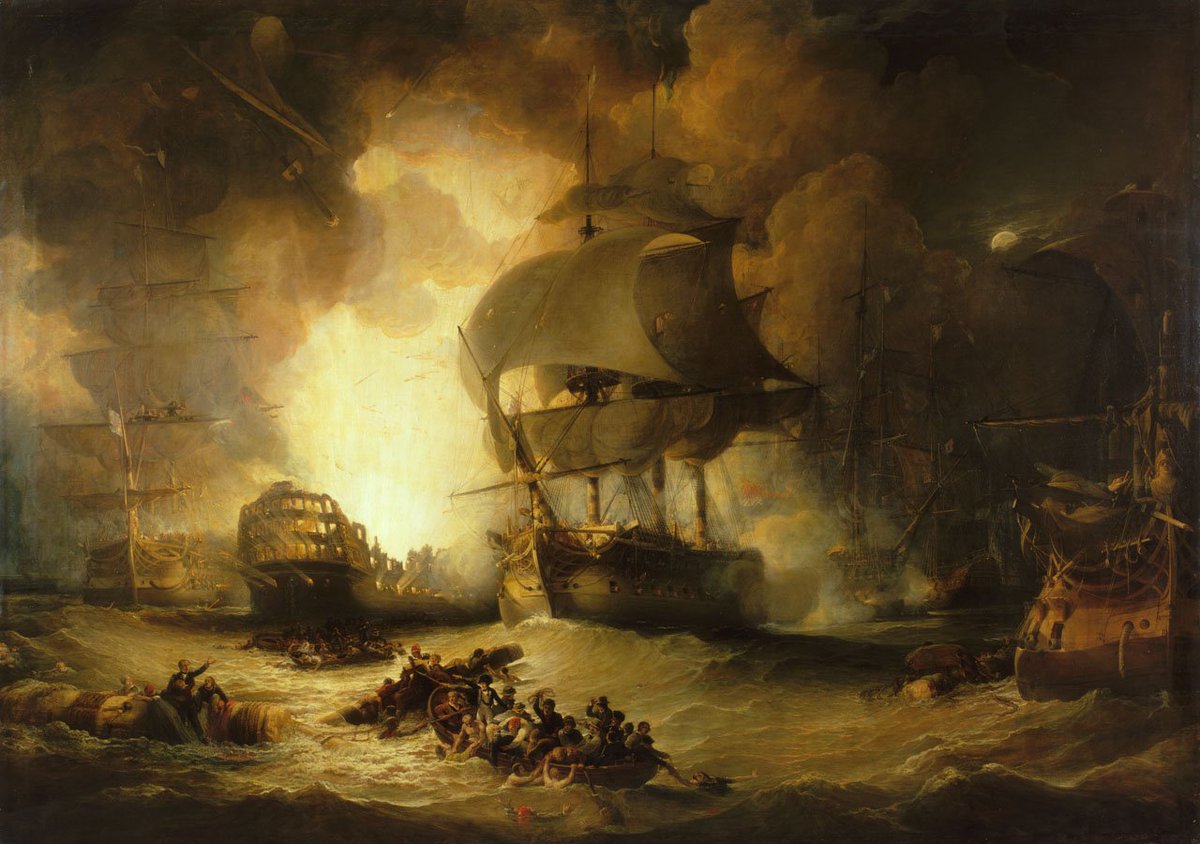

It was a stone head, half-buried in the silt & sand.
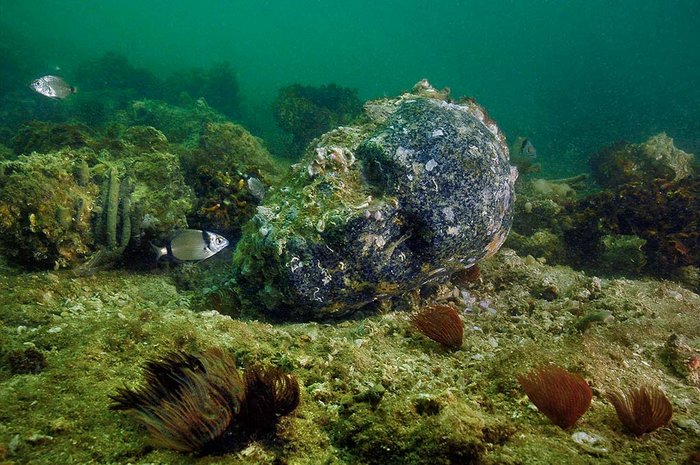
But as they worked, what they found astonished them. They uncovered vast structures: enormous statues & columns, the lines of streets, piers & bridges.
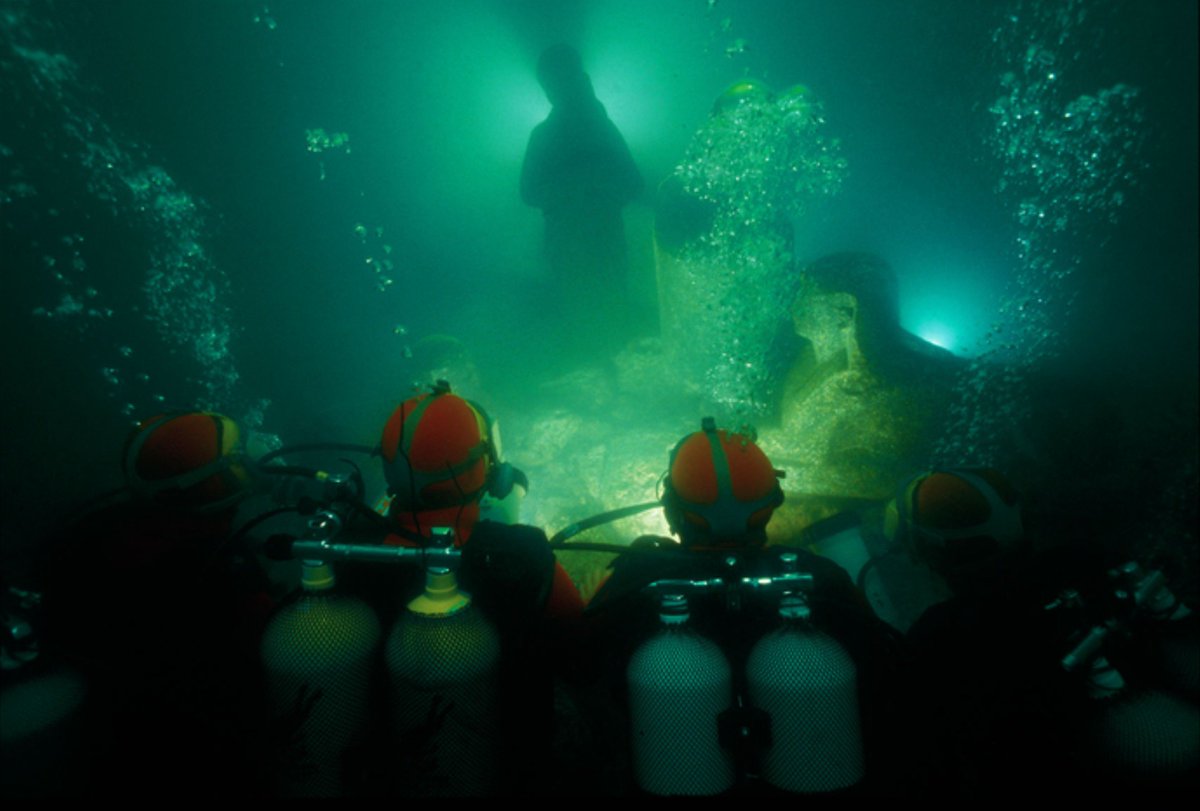
In the 5th century BCE, the historian Herodotus wrote about the great temple of a coastal city called Thonis, where the mythical hero Herakles first set foot in Egypt.
(Herodotus gutenberg.org/files/2131/213…)
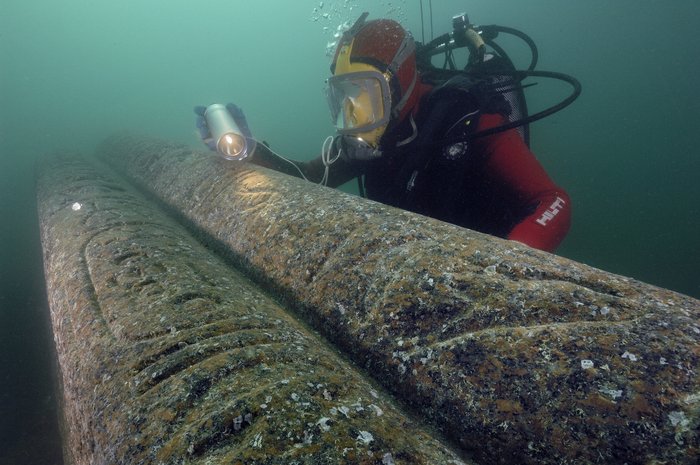
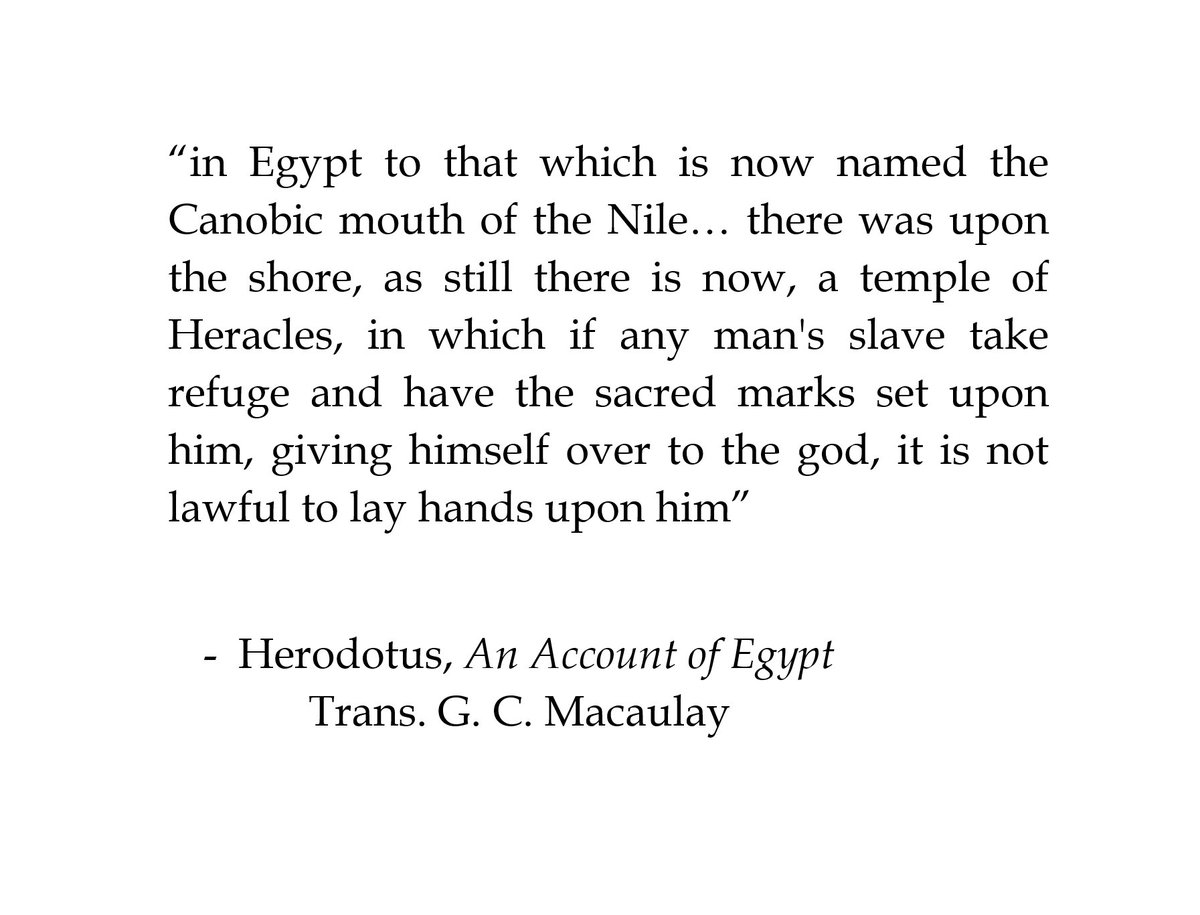
Archaeologists had searched for these two cities on land many times, but with no success. But as the teams dug on, the realised that they had found not one, but both of the cities.
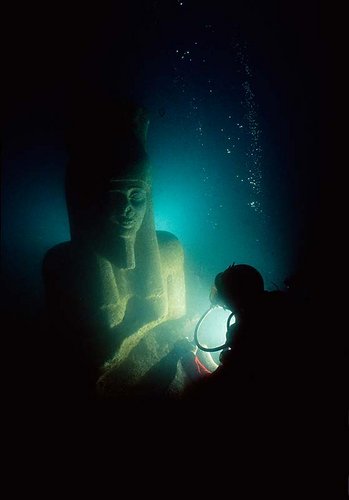
Egyptians called the city Thonis, & the Greeks called it Heracleion, after Herakles.
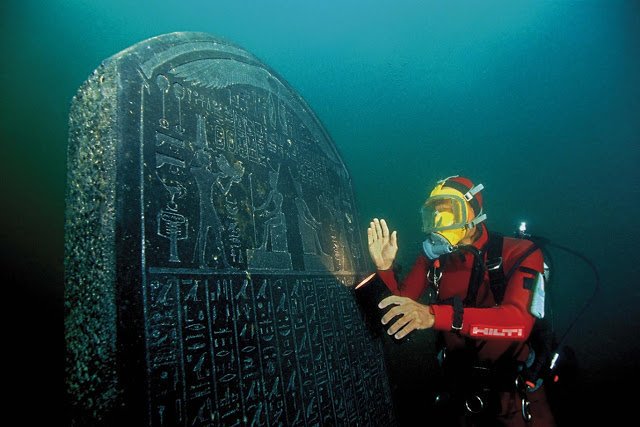
There were coins & pottery, & even animal footprints in the mud, left by buffalo over a thousand years ago.
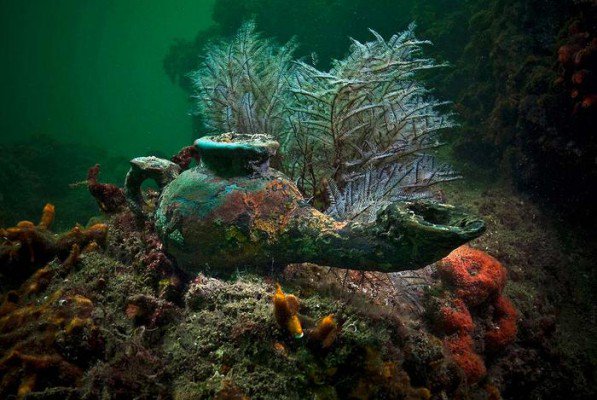
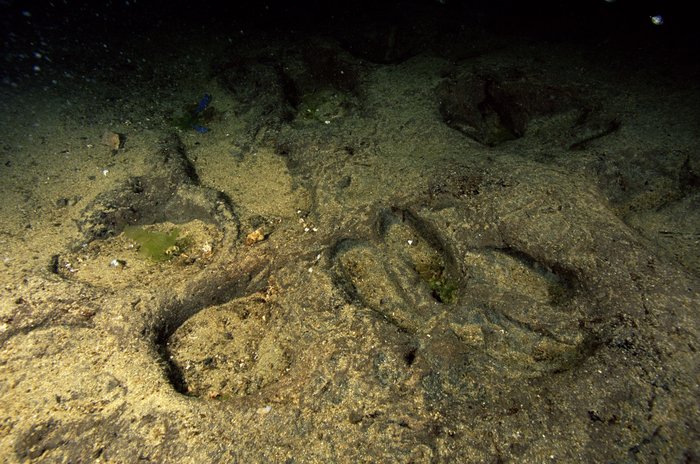
A grand canal flowed past the temple from east to west, connecting the harbours.
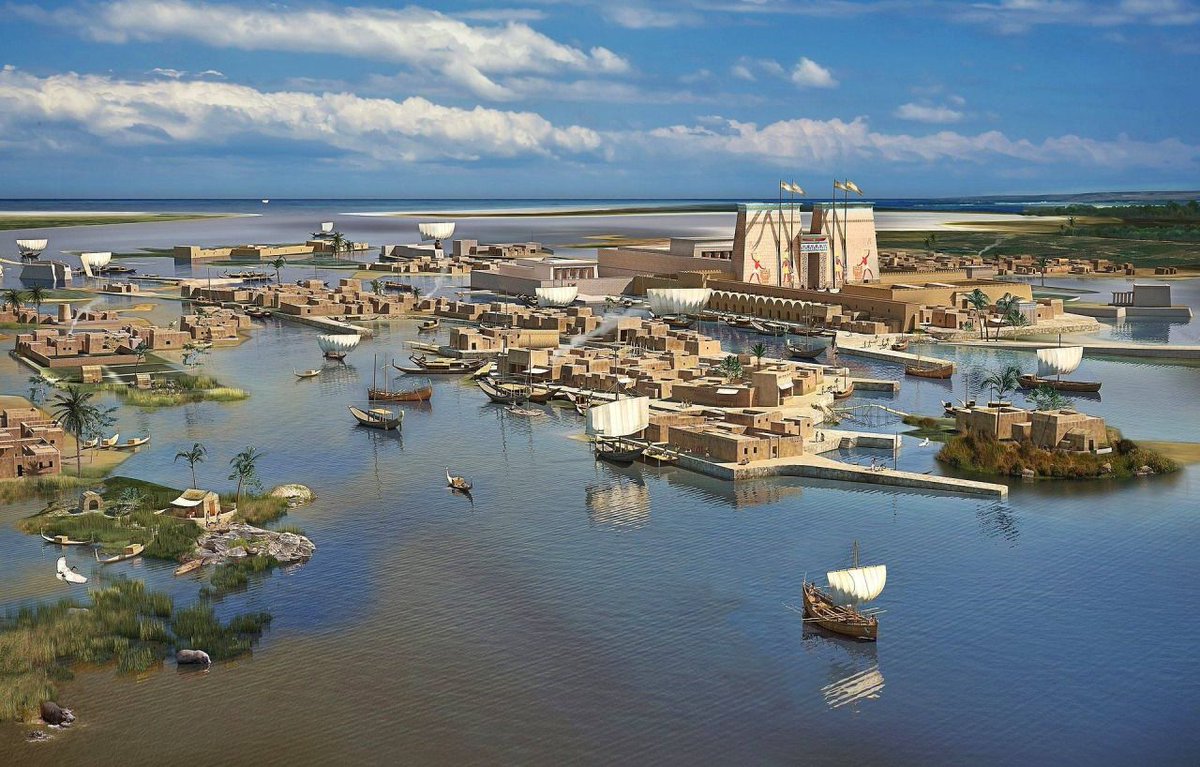
All foreign trade passed through this city, making it one of the busiest & richest ports on earth.
(detail from the tomb of Menna, Thebes commons.wikimedia.org/wiki/File:Male…)
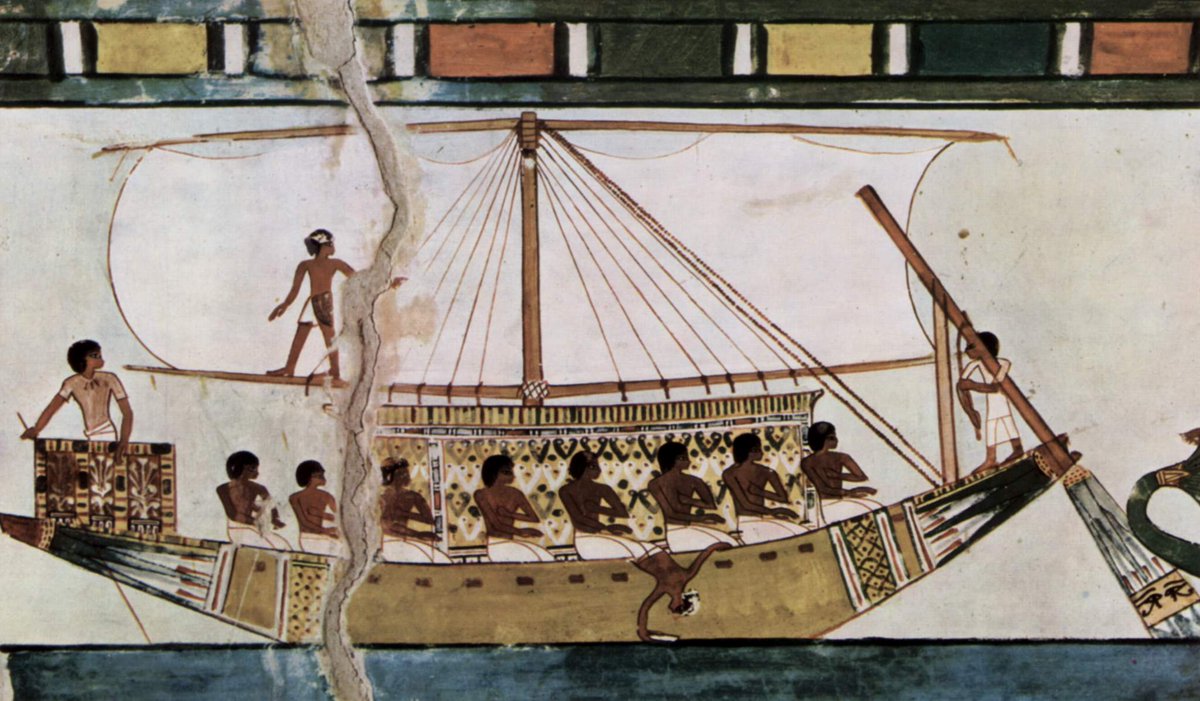

Here, Egyptian merchants exported gold, papyrus & incense, while importers brought in copper, wine & olive oil.
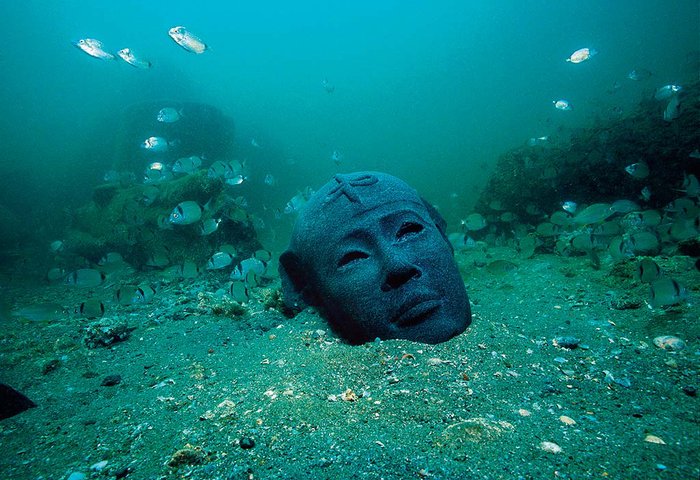
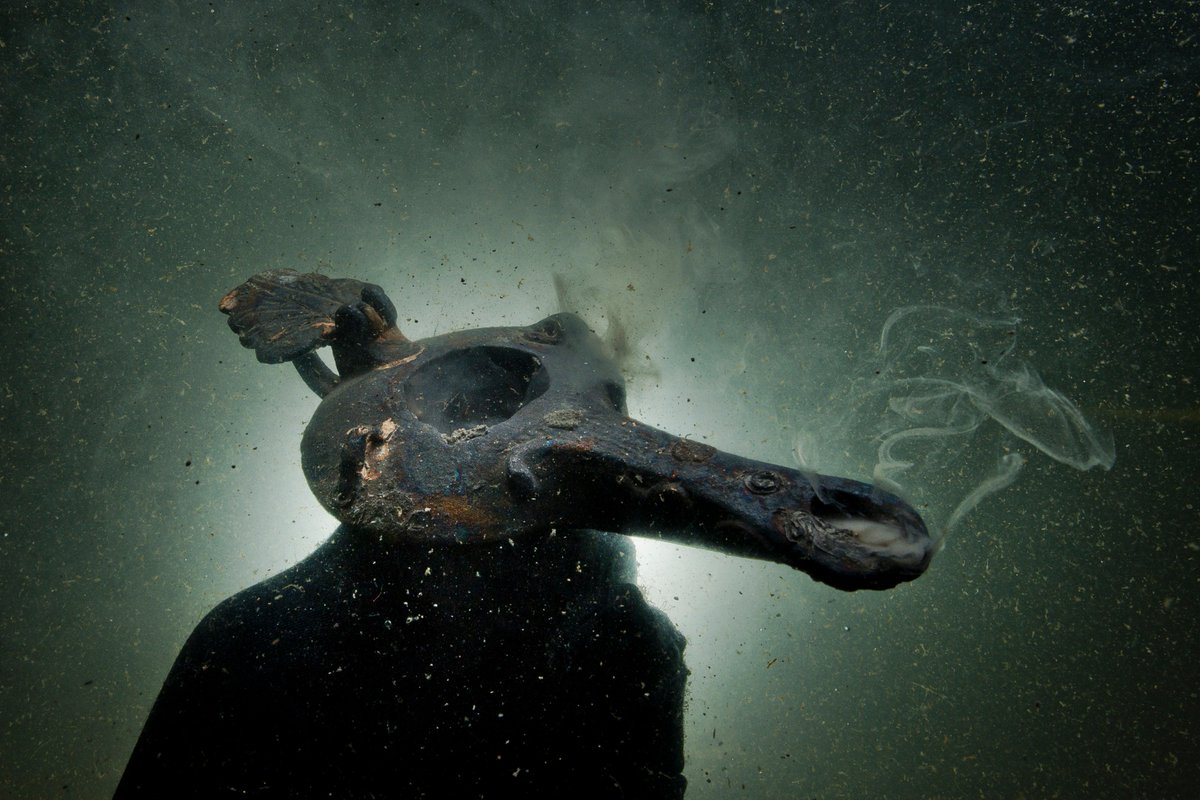
Taxes were collected by the main temple, with this wealth giving rise to opulent decorations & enormous statues.
(statues of a Pharoah, his Queen, & the God Hapy)
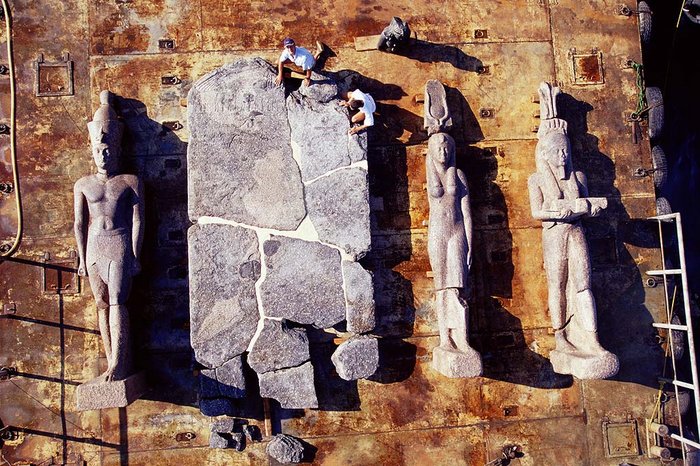
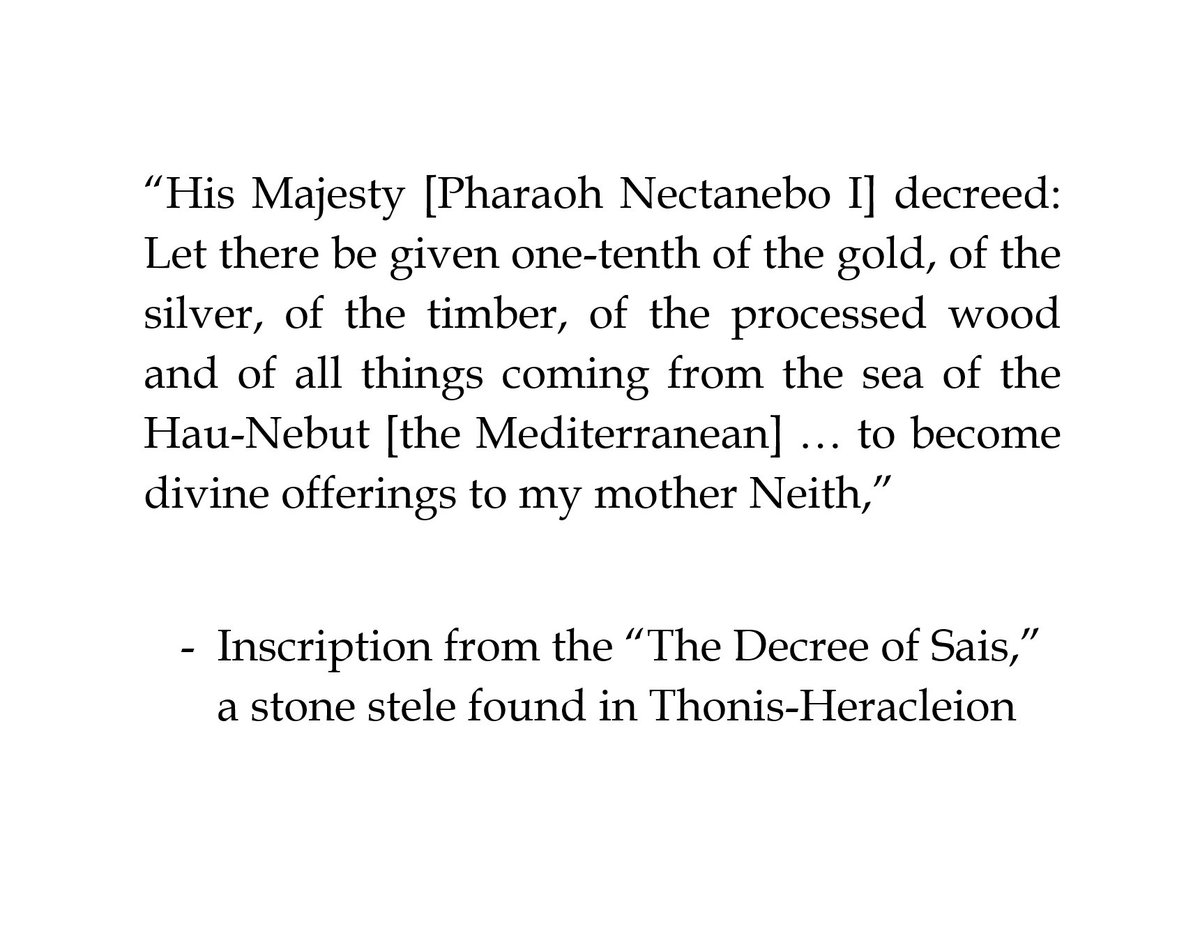
Each year, Osiris passed down the river in his ceremonial boat from the temple of Amun, surrounded by a procession.
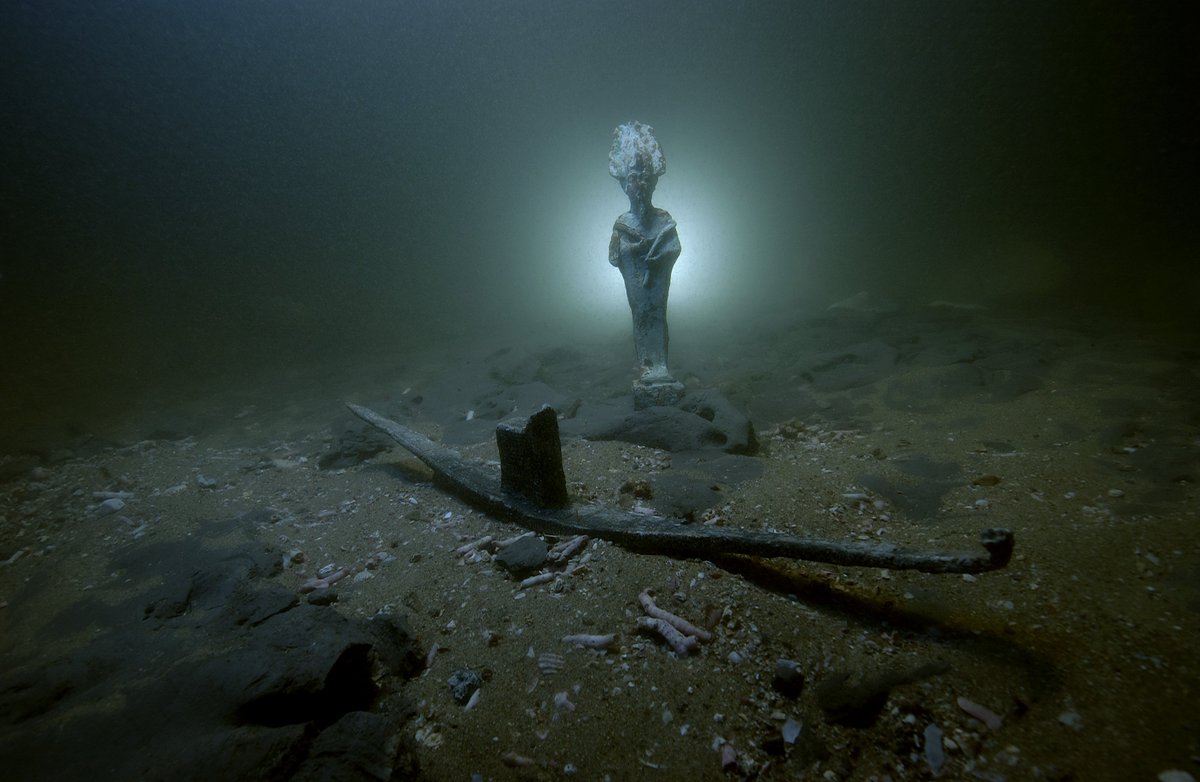
Greek styles of dress & architecture were uncovered from Thonis, & from nearby Canopus & Alexandria.
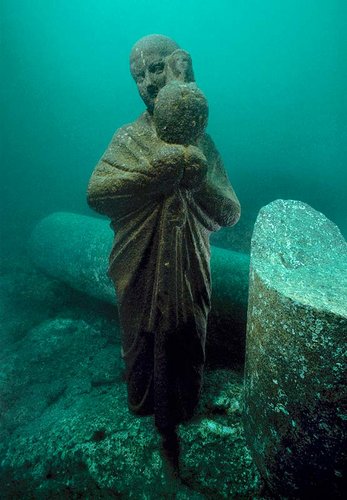
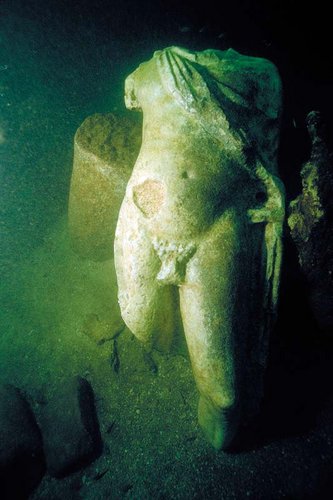
During the 2nd century, the nearby city of Alexandria surpassed Thonis to become Egypt’s largest port, spurring an economic decline.
But the city also had a fatal flaw.
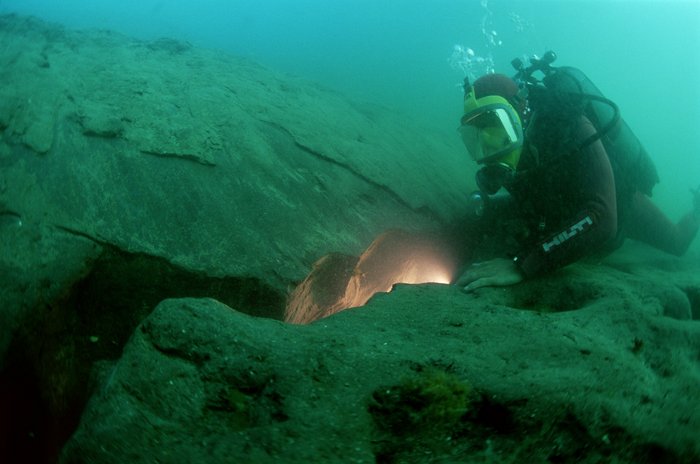
This made them particularly vulnerable to a deadly phenomenon known as soil liquefaction.
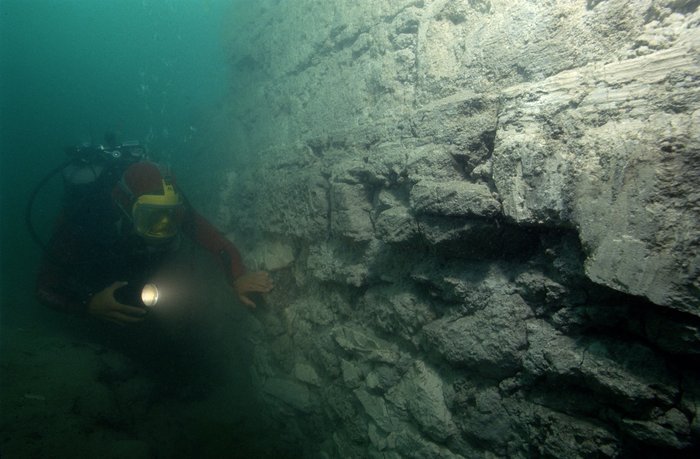
This is still an enormous challenge to modern architects in earthquake-prone areas.
(Taiwan, Turkey & New Zealand pictured)

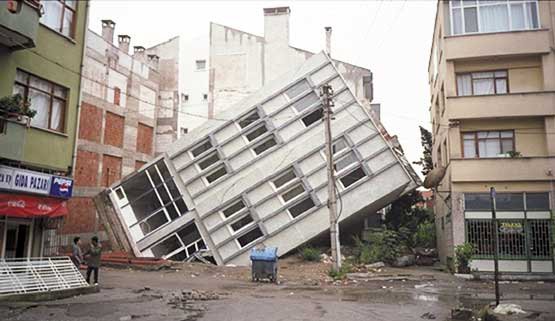
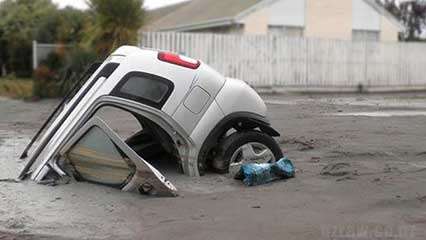
A deadly mixture of soil liquefaction & huge tsunamis devastated Thonis, & it began to sink island by island into the sea.
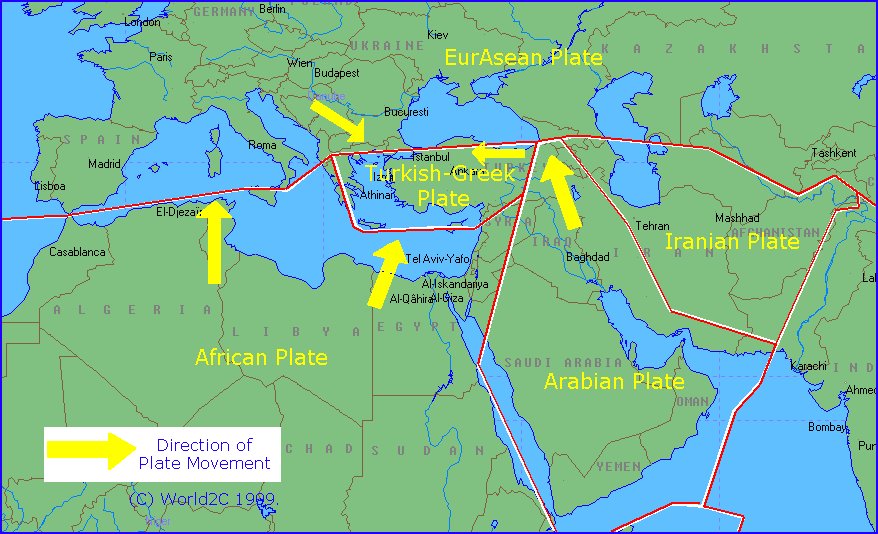
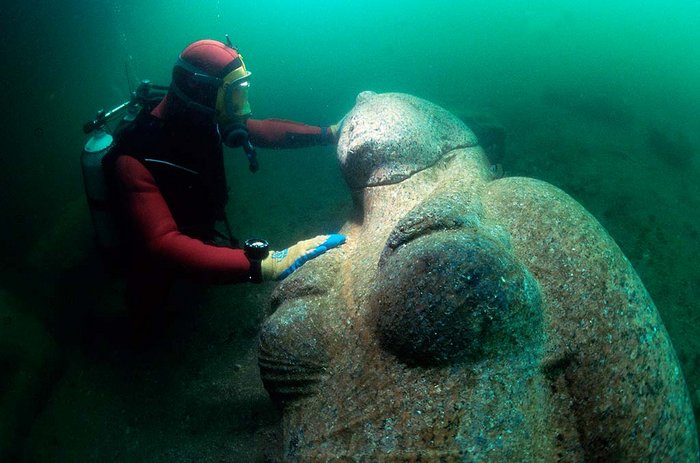
At the end of the 2nd century BCE, the magnificent temple of Amun itself sunk below the waves, a sight that must have terrified the city's inhabitants.
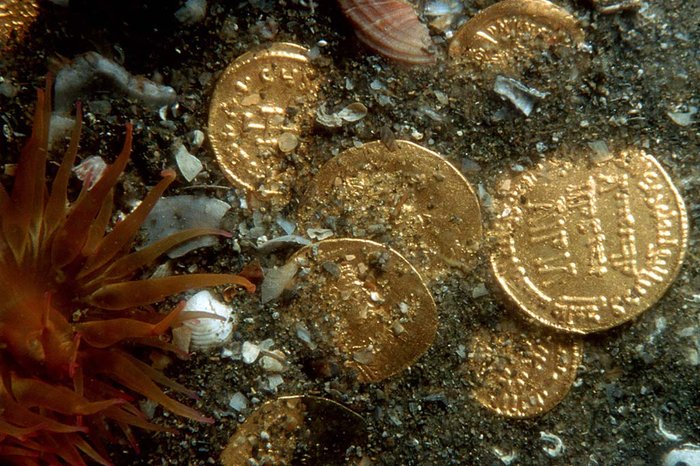
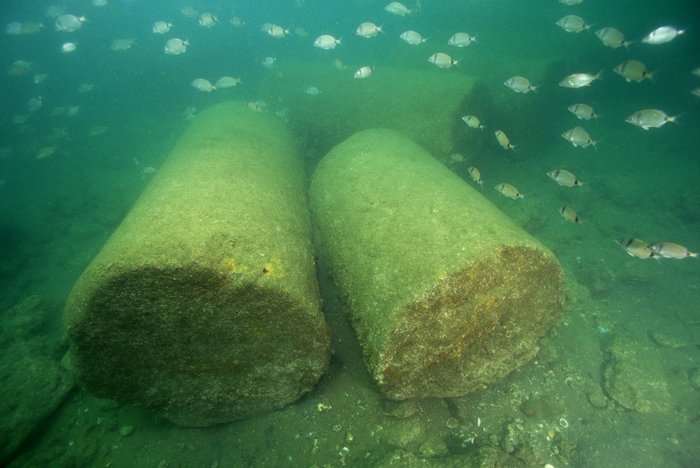
Whatever they tried, it didn’t work.
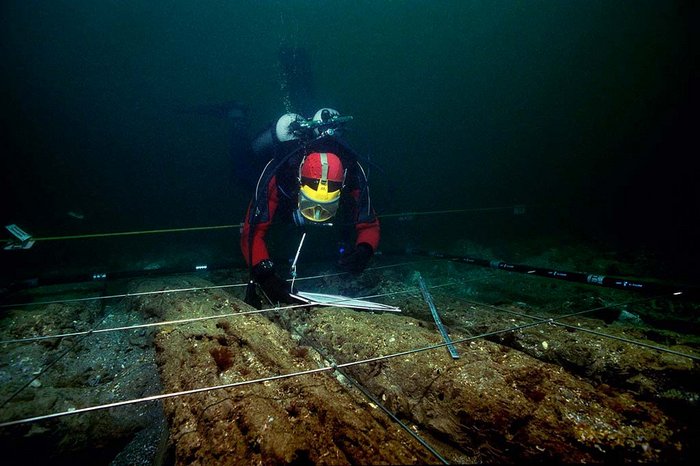
By the 8th century, Thonis was completely swallowed by the encroaching sea, & only its name lived on.
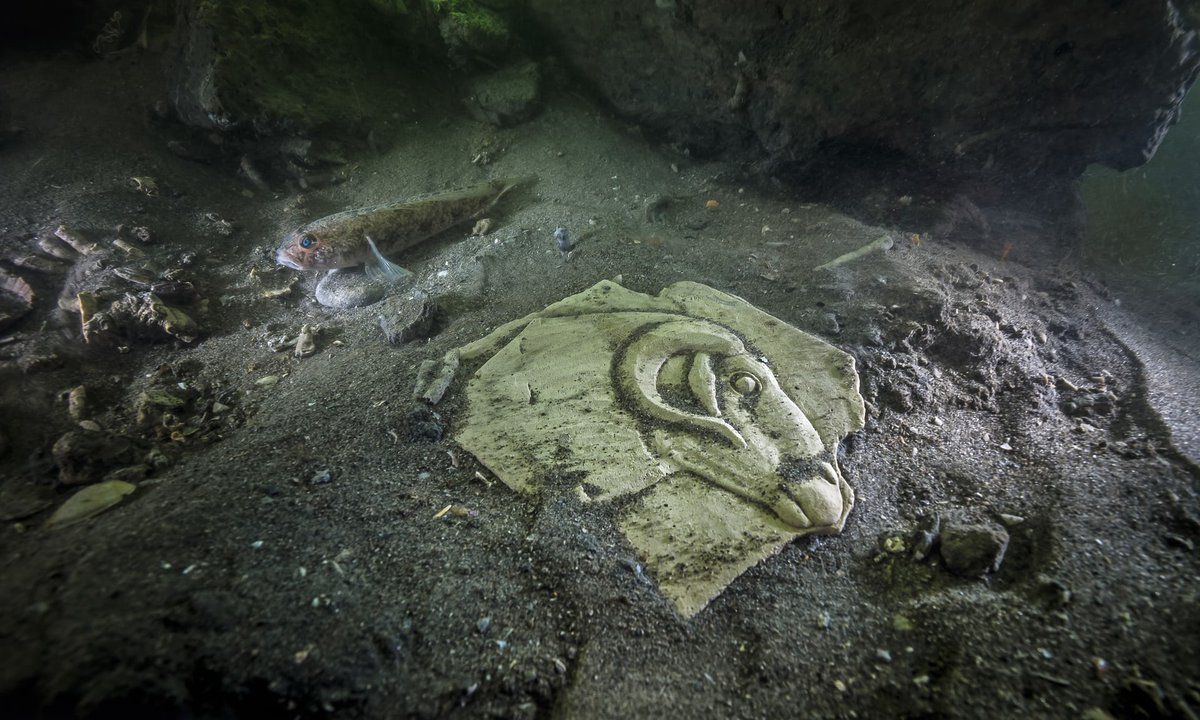
It looms out of the silty blue of the Egyptian sea & asks us how the people of future centuries will remember us, or indeed if they will remember us at all.
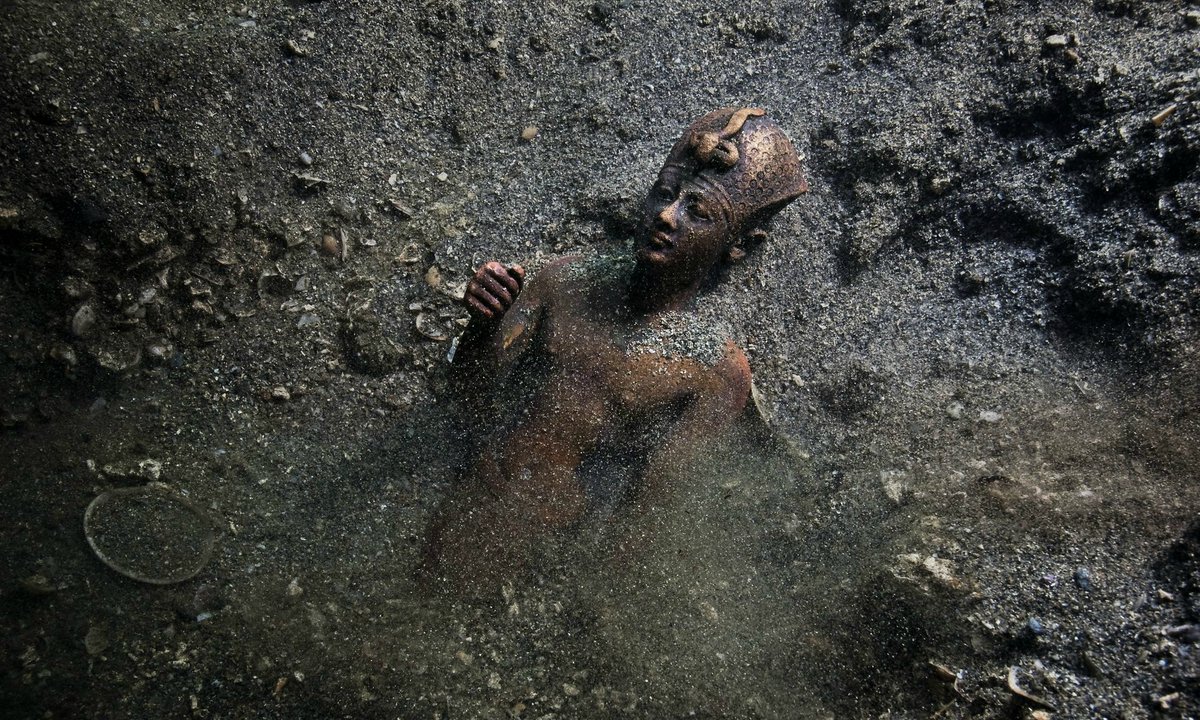
For more information, please check out the website of the man who ran this expedition, Frank Goddio: franckgoddio.org/projects/sunke…
Also check out the incredible work of the underwater photographer, Christoph Gerigk: underwater-image.com
